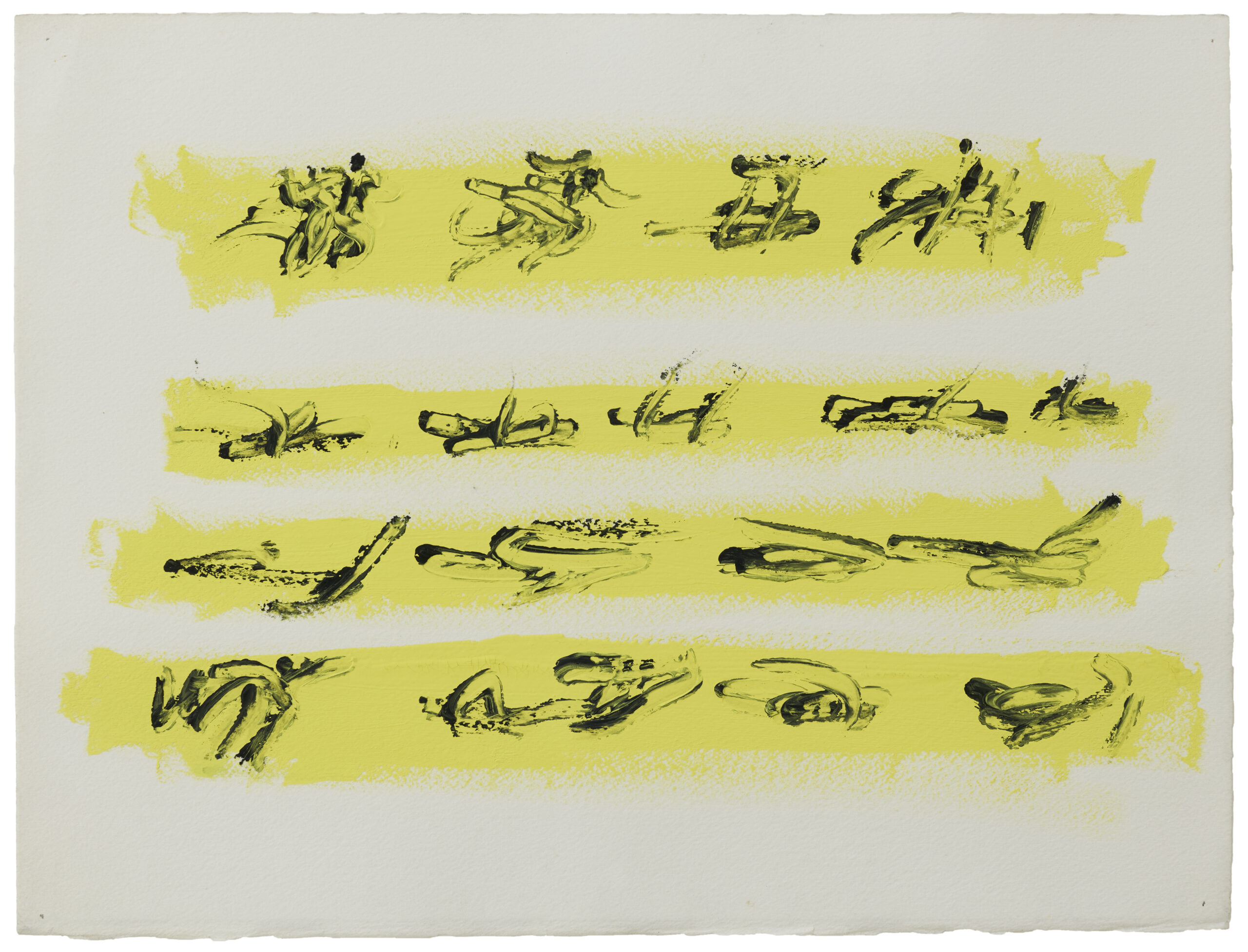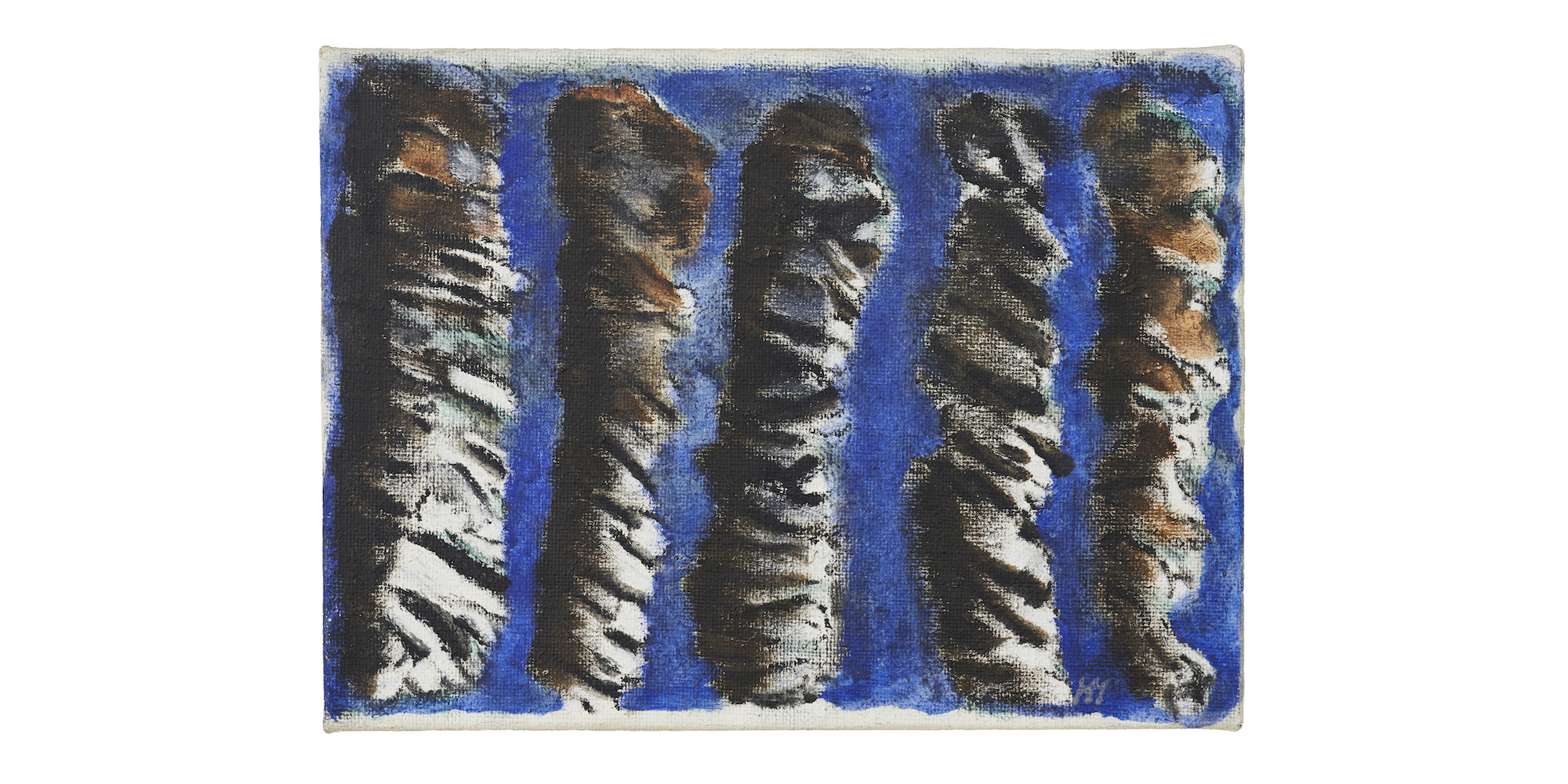HENRI MICHAUX
Special opening hours for ZURICH ART | MARCH, Friday to Sunday, March 5-7, 2021, 11am-7pm
Virtual Tour | Saturday, March 6, 2021, 10am CET | click here to access the tour
Text by Dieter Schwarz | Translation by Caspar Livie
Henri Michaux (1899-1984) is one of the rare creative personalities who managed to generate an independent and self-sustaining poetic and artistic body of work. In poetry as well as in drawing and painting, Michaux sought ways to record his inner life and to advance to unknown experiences.
Born in Namur and raised in Bruxelles, Michaux found himself from this youth in an attitude of refusal to ideas and values represented by family and school and later his wider environment. At 20, Michaux turned his back on his old life, signed on as a sailor in Rotterdam, and circumnavigated the world, only to find that his search was not for geographical distance, but for something else.
A visit to the exhibition La peinture surréaliste at the Galerie Pierre in Paris in 1925 surprised the young poet, to whom visual art had previously meant little. Here he saw works by de Chirico, Paul Klee and Max Ernst, which inspired him to paint, as they showed something other than depictions of reality. But how was he to paint or draw? “Perplexity: I only want to learn from myself, even if the paths are not visible, not laid out, or suddenly vanish. I also don’t want to ‘reproduce’ anything of what is already in the world.” Michaux harshly rejected representational painting, and abstract art seemed equally pointless to him; he also wanted nothing to do with Surrealism, since he shied away from the dictates of André Breton and his political thought patterns; it also seemed too short-sighted for him to simply surrender to the stream of the unconscious by means of “écriture automatique.”
With the Mouvements, Michaux began a series of drawings in 1950 that took the ideogram, a pictorial sign language like Chinese script, as their point of departure; although he already drew his first pictorial alphabets at an earlier stage. In the Mouvements drawings, the figures are arranged in rows that can be read horizontally or vertically like scripts. However, these ideograms are not fixed signs, they show moving figures, and their movement is precisely what fascinated Michaux, because movement opens up an unlimited world of signs without fixed meanings.
An important station in Michaux’s search for the unknown are experiments with mescaline and other hallucinogenic substances that he undertook in the 1950s. In January 1955, he took mescaline for the first time to learn about its effects. Michaux, who endeavored to record the sensations he experienced in descriptions and countless fine drawings, was as fascinated as he was overwhelmed by the flooding of the subject and its submergence in the body’s own yet utterly alien rhythms. Misérable Miracle was the ambivalent title of the first book about his experiments. Michaux did not make light work of psychogenic drugs, for he lived a life as a monastic ascetic who demanded the highest concentration of himself and withdrew to manifest himself.
The ambition to paint and draw on the edge of art history allowed Michaux to face the abundance of the disordered in an unprejudiced way. He seized this opportunity and invented ever new ways of working. The only criterion they have in common was that they become concrete, figuratively speaking, without feedback via a controlling authority, the moment the tip of the brush or pen touches the paper. This can be seen, for example, in the gouaches of the mid-1960s, which are arranged in lines; they are applied impasto, so that the glyph-like figures are set in them like impressions. When Michaux discovered acrylic paint shortly thereafter, he created the so-called “arrachements” by drawing directly on the paper with the paint tube.
From this life, which was outwardly uneventful and unspectacular, arose a wealth of watercolors and, in the last decade of his life, small paintings, which always surprise anew. In 1979, the now 80-year-old artist began to work on a group of paintings on cloth lined board, which he preferred to actual canvases on stretchers. The paintings often depict imaginary landscapes suffused with rhythm, in which Michaux’s phantom figures appear, often grimacing, sometimes totemic.
Michaux’s goal was not the great magnum opus, but the “inner sentence,” “the sentence without words, a rope that unwinds in a meandering way and accompanies everything at the core.” His works were to follow the moments of life as they follow each other: “I wanted to draw the consciousness of existence and the flow of time. How one measure the own pulse.”
We thank the Archives Henri Michaux, Paris, and Jahn und Jahn, Munich, for the generous support of this exhibition. All works of the exhibition are illustrated in the catalogue “Henri Michaux – Saying No” published by Jahn und Jahn in 2020, with essays by Tim Geissler and Rainer Michael Mason.
INSTALLATION VIEWS



ABOUT THE ARTIST
Henri Michaux was born in Namur, Belgium, in 1899 and was a poet, writer and visual artist.
In addition to his literary work, his oeuvre as a visual artist received international attention during his lifetime and was shown at the documenta in Kassel and the Venice Biennale, among others. Important institutions such as the Musée National d’Art Moderne and the Centre Georges Pompidou in Paris, the Solomon R. Guggenheim Museum in New York, and the Musée d’Art Contemporain in Montreal dedicated extensive retrospectives to the artist. Even after his death in Paris in 1984, interest in Henri Michaux’s visual oeuvre remains unabated, and important solo exhibitions have been on view in recent years at institutions such as the National Museum of Modern Art in Tokyo (2007), Kunstmuseum Winterthur (2013), and Guggenheim Bilbao (2018).
VIRTUAL EXHIBITION TOUR

Henri Michaux
Untitled, 1973
acrylic and gouache on paper
29 x 38 cm
Contact us for inquiries and more information at mariechristine@liviefineart.com or caspar@liviefineart.com.
Image 1 | slideshow on top
Henri Michaux, Untitled, 1968, acrylic on paper, 56 x 37.7 cm
Image 2 | slideshow on top
Henri Michaux, Untitled, 1983, oil on canvas, 25 x 34 cm
Image 3 | slideshow on top
Henri Michaux, Untitled, 1950, ink on paper, 31.7 x 24 cm




